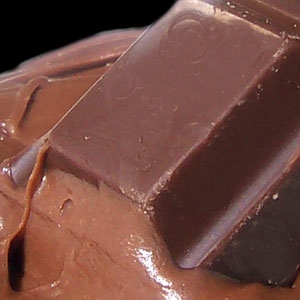We all know about ‘Mouth Feel’, that hard-to-describe quality of foods that can determine, independent of serving temperature or flavour, whether we’ll like them or not. But now, researchers have discovered how mouth feel is generated, and a little more of the magic of enjoying our food goes away…
 Picky eaters consistently reject foods because of their unacceptable
Picky eaters consistently reject foods because of their unacceptable
texture, rather than flavour, serving temperature or aroma…
While the mechanics of flavour and aroma perception have been pretty thoroughly explained by science, the way mouth feel – the perception of the texture and associated tactile sensory effects of tasting our food – has remained a tantalising mystery. Until now…
What they did
Researchers at Penn State University recruited a group of 111 volunteers who had the touch sensitivity of their tongues measured, and then separated those subjects into high- and low-sensitvity subgroups. The subjects were then asked about their reactions to different levels of particle sizes in Chocolate. Chocolate was deemed a perfect food to use in the study.
“Chocolate manufacturers spend lots of energy grinding cocoa and sugar down to the right particle size for optimal acceptability by consumers,” said Study spokesperson Dr. John Hayes.
Chocolate texture-detection experiments included both manipulated chocolates produced in a pilot plant at the university lab and two commercially produced chocolates.
What they found
One observation researchers made was that, like flavour and aroma, texture is not consciously noticed unless it falls outside of acceptable parameters. For chocolate specifically, oral texture is a critical quality attribute, with grittiness often being used to differentiate bulk chocolate from premium chocolate.
As for where in the mouth we perceive food texture, it was found that the most sensitive area in the oral cavity was the centre of the tongue.
The takeaway
“We’ve known for a long time that individual differences in taste and smell can cause differences in liking and food intake — now it looks like the same might be true for texture,” said Hayes. “This may have implications for parents of picky eaters since texture is often a major reason food is rejected.”
Hayes says the results of the Penn State experiments obviously have implications for the Chocolate industry: “This work may help them figure out when [their product is ground finely] enough without going overboard.”
But they also have value to other sectors of the Food Processing sector.
He also noted that parents could benefit from a knowledge of how texture effects the perception of food by children who are picky eaters. Picky eaters consistently report that they reject certain foods because of their unacceptable textures, not unacceptable flavours or aromas.
My take
On the down side, I see the Processed Food sector using particle size manipulation as yet another way of getting us to crave their often unhealthy Foods. But they’ve already taken manipulation of the more-palpable dimensions of flavour and aroma to extremes, so, why split hairs?
For the Restaurant Sector, I can see an opportunity for Chefs to refine their traditional preparation techniques to optimize the dishes they present to the dining public.
For me, as a diner, I see little new on the Food Appreciation horizon, from a practical perspective. But the findings do help assuage one’s natural curiosity about how the whole complex process of food appraisal and enjoyment works. Alas, turning back to the down side, the entire exercise makes a little more of the tantalizing magic surrounding enjoyment of my Food go away…
~ Maggie J.

